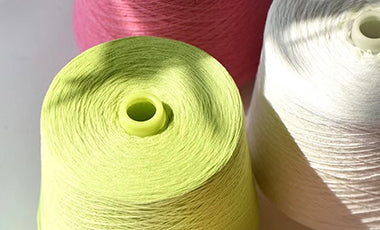In the world of yarn, Merino and Lambswool often appear in the same conversation. Both are soft, warm, and natural, but the stories behind them—and the way they feel in your hands—are worth exploring. Understanding their differences will help you choose the right material for your project and bring both comfort and function to your finished piece.
1. Where They Come From
-
Merino Wool
From the Merino sheep, prized for its ultra-fine fibers, often used in high-end, next-to-skin knits. -
Lambswool
From a sheep’s first shearing—usually at 6–8 months old. These newborn fibers have never been exposed to the elements, giving them an extra level of softness.
2. Fiber Fineness and Feel
-
Merino
Typically measures 17–21 microns in diameter, with superfine types under 17 microns. Smooth and silky, perfect for garments worn against the skin. -
Lambswool
Slightly coarser than superfine Merino (about 19–22 microns) but still soft, with a natural loft and springiness.
3. Warmth and Breathability
-
Merino
Highly breathable, helping regulate body temperature while keeping you warm—ideal for all-season wear. -
Lambswool
Holds more air within its fibers, making it warmer and cozier—perfect for autumn and winter projects.
4. Durability and Care
-
Merino
Finer fibers can pill with friction and require gentle washing and care. -
Lambswool
Naturally springy and resilient, it holds its shape well and works beautifully for structured knits.
5. When to Use Each
-
Choose Merino When You Want:
-
Next-to-skin comfort (light sweaters, baby clothes, base layers)
-
Excellent temperature regulation
-
A sleek, refined hand feel
-
-
Choose Lambswool When You Want:
-
Cozy, warm projects for cold weather
-
Knits with body and structure
-
A soft but airy, lofty feel
-





